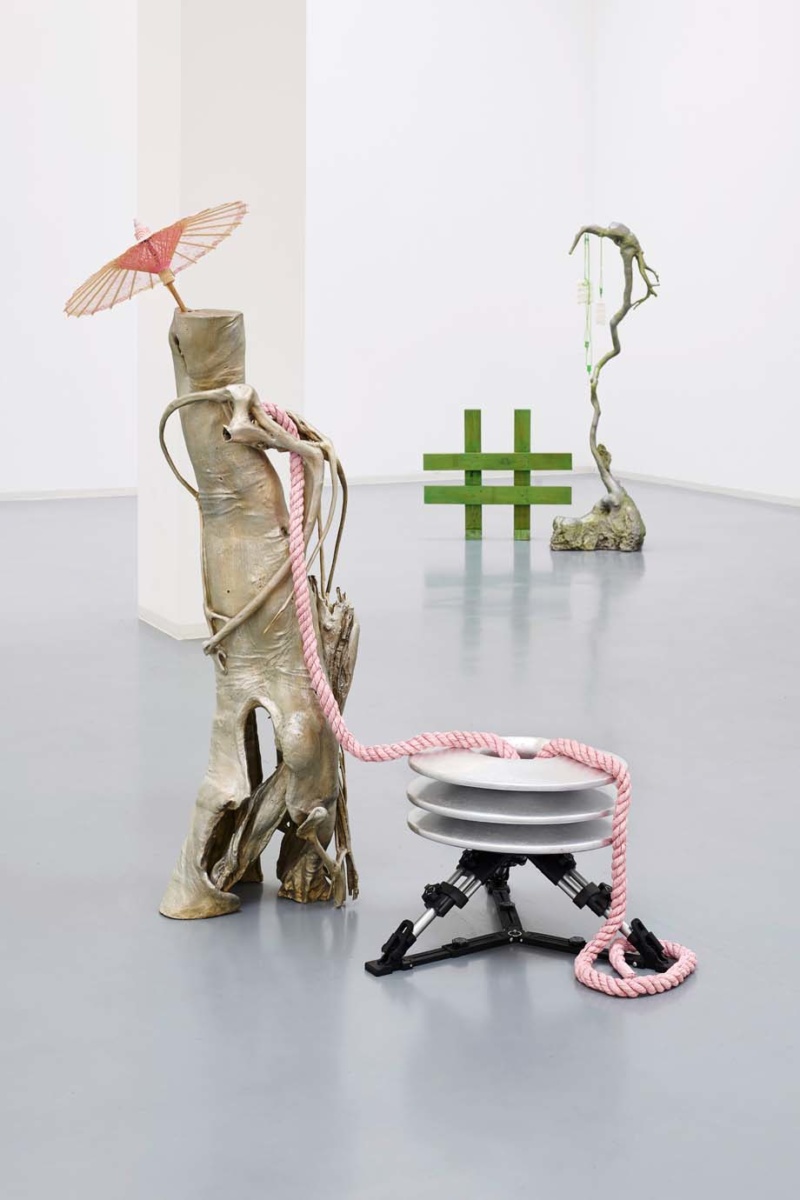
Disparate images float across your screen. Imagine as you scroll that you seek not a document nor a window, but a poem. Your eyes dart through colors and shapes, lingering wherever weird feelings arise—tenderness, disgust, déjà vu. This is the logic of Guan Xiao’s work, which seeks out subtle yet visceral emotional engagement in an age of media overload, and mystery in an age of explanation. In her videos, the artist uses a three-channel format to bring clips trawled from YouTube into unlikely dialogue. In Just a Normal Day (2019), a soft voiceover intones a text with phrases like if it’s in my head it’s relentless and my heart is empty, but the songs I sing are full of love. Meanwhile, we see various clips including a dog bounding through the snow, facial recognition scanning and a time lapse of a rotting fetal pig. “I have one criterion for evaluating whether the work is interesting: contradiction—whether it’s material, visual or conceptual,” Guan says about her decision-making process.
In her sculptural work, the Beijing-based artist creates perplexing tableaux by joining gnarled cast forms with industrial gadgets, punctuated here and there with cartoonish details. Metal tree trunks or lumpy fiberglass blocks are intertwined with more recognizable objects like motorcycle parts, colored ropes, reading lights, skis, car rims and artificial flowers. Non-specified tribal heads and stelae, molded in fiberglass to approximate stone à la Disney, are recurring motifs in her work. “Most contradictions are but two different manifestations of the same thing,” Guan says. A self-described Internet addict, she works from the point of view that time is not linear. “The primordial past and the future that has yet to come, or may never come, are indistinguishable.” She explains, “if we can’t find any record for the function of an archaeological relic because it is too ‘ancient’ or if we don’t know the purpose of an object from the future because it is too ‘advanced,’ doesn’t this mean that their impact on us is very similar?”

In her February 2019 show, “Products Farming” at the Bonner Kunstverein in Bonn, Germany, a hoard of sculptures on the floor looked like hand tools strewn about by a giant or perhaps shrines to esoteric deities replete with cyborg floral arrangements. Guan’s contrasting materials and references physicalize a feeling of dislocation from time. The viewer must “read” the work for clues, but there is seemingly no key to unlock a hidden meaning. She treats all subject matter with an even hand, saying “ideas, like a mug or a tree, are but subjects that will keep appearing and disappearing.” Further, the past and the future “are both products of our imagination—a form of rationalization we impose.” If rationalization can be imposed, then absurdity can be imposed too. Tripods and pipe stands frequently appear in her sculptures, as though we are on the set of a photoshoot. And though bright colors and jaunty shifts in scale render her compositions rather whimsical, they also have a sinister quality. Clamps and mechanical joints create a chilling sense that her sculptures contain objects pressed into service, cursed even, and held immobile for our gaze.
Online, we have ever-greater access to content without context, and ever-greater fears about the continuity of life as we know it. It is within this dialectic that Guan stages our chaotic relationship to temporality. There’s a fine line between revelry and riot, a subtitle in her three-channel video Dengue, Dengue, Dengue (2017) reads. Footage of the 2016 New Year’s Eve bombing in Istanbul is flanked on either side by crowds with phones held aloft, silently recording. What is the world? the subtitle asks. The intensity of the will makes everything unspeakably holy. But, don’t get hypnotized by the perpetual motion machine. While two images are sometimes set up as comparisons—rushing water and a crowd running downhill, or a pundit and a monkey—a third video will appear in the center screen to disrupt the equivalency. The eye can’t possibly focus on everything at once, nor place the referents, creating a maddening swivel between different elements.
Guan is always seeking and constructing contradictions, and because we live and breathe contradiction under neoliberal capitalism, her work epitomizes our age. “What we call ‘hope’ is but desire that has an expiration date,” she says grimly. But her practice, while often inscrutable in its subjects, is precise in its method: reflecting a current condition of meaning-making. You must remember, Guan says, that “all that we have is the present.”










 in your life?
in your life?

